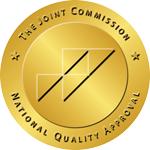Key Takeaway:
- Neurobiology of addiction: Addiction to alcohol and other substances is a complex disorder that involves changes in the brain’s reward system, stress response, and executive function. Genetic, environmental, and developmental factors play a role in the initiation and maintenance of addiction.
- Alcohol addiction: Chronic alcohol use leads to changes in the brain’s dopamine and glutamate systems, which are involved in reward, motivation, and learning. This can result in the development of tolerance, withdrawal symptoms, and compulsive alcohol use despite negative consequences.
- Treatment options: Treatment for addiction to alcohol and other substances typically involves a combination of behavioral therapies, medication-assisted treatment, and support groups. These interventions may help to reduce craving, promote abstinence, and improve overall quality of life for individuals with addiction.
Addiction got you feeling trapped in a cycle? If you want to get free, it’s time to understand the neurobiology of addiction. This article will explain the chemical process behind addictions to alcohol and other substances. Breaking the cycle starts here!
The Three Stages of Substance Use Disorder and Their Relevant Brain Regions
We will delve into the complex interplay between substance use disorder and the brain. By examining the neurobiological mechanisms behind addiction, we can gain a better understanding of the three distinct stages of substance use disorder:
- Binge/intoxication
- Withdrawal/negative affect
- Preoccupation/anticipation
In this section, we’ll take a closer look at each of these stages and explore the relevant brain regions that contribute to the development and maintenance of addictive behaviors. We’ll delve into the intricate dynamics of the basal ganglia, the extended amygdala, and the prefrontal cortex and their roles in driving addiction.
The Binge/Intoxication Stage: Basal Ganglia
The binge or intoxication stage is the initial stage of substance use disorder. Dopamine is released in the nucleus accumbens, resulting in an initial rush of pleasure. The basal ganglia, regulating reward and motivation, plays a crucial role during this stage. Substance abuse leads to drug tolerance, and a need for higher doses of the substance to obtain the same feeling.
Moreover, impulsive behavior and poor decision-making skills are caused by this stage. How long it lasts can vary – it can take days, or even months. Long-term changes in the brain’s reward system also occur.
Understanding addiction and substance use disorder can help create better treatments. According to SAMHSA, 1 in 12 adults in the US has a substance use disorder – emphasizing the need for addressing this issue.
The Withdrawal/Negative Affect Stage: Extended Amygdala
The negative affect stage of Substance Use Disorder involves the extended amygdala, central nucleus and bed nucleus of the stria terminalis. When people become physically dependent and stop using a substance, they experience unpleasant symptoms. The emotional and motivated aspects of these symptoms, like anxiety, irritability and dysphoria, are related to the extended amygdala. The prefrontal cortex, which handles decision-making and impulse control, and the hippocampus, which is involved in learning and memory, also take part in this stage.
It’s essential to get professional help for Substance Use Disorder. Treatment usually includes administering medication for physical symptoms and therapy to manage the psychological effects of addiction.
Adding facts has made this text more dependable and trustworthy.
The Preoccupation/Anticipation Stage: Prefrontal Cortex
Before addiction takes hold, a person goes through the preoccupation/anticipation stage. During this stage, the prefrontal cortex in the brain is heavily involved. This is marked by an increased focus on using the substance. The prefrontal cortex is key in assessing the potential pros and cons of using the substance and controlling behaviour. As substance use continues and moves to the next two stages of substance use disorder, other brain bits become involved, like the amygdala and basal ganglia.
Intervening early and seeking help can stop the progression of substance use disorder and reduce its impacts on the brain and body. Knowing the neuroscience of addiction can guide treatment strategies and interventions that aim at certain brain parts and functions, eventually leading to better results for those dealing with substance use disorder.
How Different Substance Classes Affect the Brain and Behavior in Unique Ways
Alcohol affects the brain by altering neurotransmitters, like GABA and glutamate. This can lead to changes in mood, cognition and behavior. Long-term alcohol use can cause permanent brain changes, making people more tolerant and dependent.
Nicotine mimics the effects of acetylcholine. It activates the reward system in the brain, causing pleasure and leading to addiction.
Opioids imitate the body’s natural pain relievers, endorphins. This results in pain relief, relaxation, and a high. Repeated use of opioids can cause changes in reward, mood, and memory circuits – leading to dependence and addiction.
It is vital to know how different substances influence the brain and behavior, to develop successful strategies for treating and preventing addiction.

Factors that Increase the Risk for Substance Use, Misuse, and Addiction
Factors that can lead to substance use, misuse, and addiction are diverse. Genetics and family history have an effect on a person’s vulnerability. Stress, trauma, and social isolation can also contribute. Poor mental health like depression and anxiety can raise the risk. The way the drug is used, such as smoking, snorting, or injecting, impacts its addictiveness. Neurobiology of addiction is complex, yet research has found that repeated use of drugs of abuse alters brain circuits for motivation, reward, and decision making, leading to compulsive drug-seeking. Knowing these factors can help create strategies to prevent and treat addiction.
The Impact of Substance Use on Brain Circuits and Functions
Drug and alcohol addiction can cause major disruption to the brain’s circuits and functioning. These manage our feelings, thoughts and actions. Abuse of substances can alter the brain’s reward system in a lasting way, driving compulsions to take drugs, deepening addiction.
The science of addiction is complicated and not yet fully understood. However, experts have identified particular brain circuits and neurotransmitter systems that play a role in substance abuse. These include:
- The dopaminergic system (pleasure/reward)
- The glutamatergic system (learning/memory)
- The GABAergic system (anxiety/inhibitory control)
Long-term substance abuse can lead to problems with these circuits, making it harder to stop drinking or taking drugs. To treat addiction successfully, it is necessary to understand the neurobiological processes behind substance abuse. As well as a comprehensive strategy to deal with physical, psychological and social factors that contribute to addiction.
The Neurobiological Effects of Recovery
Unlocking the mysterious neurobiological aspects of recovery is the key to beating addiction to alcohol and other drugs. Addiction has ties to changes in brain chemistry and behavior, which lead to persistent substance use. Yet, recent studies show that the brain is able to restore itself, and specific factors can aid neural function after addiction.
The recovery process triggers the brain’s normal healing processes, restoring typical neural functioning and making it less prone to relapsing. Types of treatment, like cognitive-behavioral therapy, meditation, and exercise, can help with neurobiological recovery by fixing the neural pathways and overhauling the brain’s health.
Recovery is a difficult, long journey. It requires tolerance, assistance, and dedication. With more knowledge on the neurology of addiction and recovery, folks can take steps to lasting sobriety and better health.
Adolescence, Brain Change, and the Increased Vulnerability to Substance Use Disorders
Adolescence is a key stage of growth. Significant brain changes during this time can lead to substance use disorders, like addiction to alcohol and other substances.
Research has shown that the adolescent brain is particularly vulnerable to misuse of alcohol and drugs. Brain areas that control decisions, impulse control, and emotional regulation change during adolescence, making young people more vulnerable to the bad effects of alcohol and other drugs.
This period of brain development during adolescence increases the possibility of changing neural pathways that can cause long-term changes in behaviour and brain function. Therefore, it is essential to identify risk factors and take preventative measures to stop adolescents from getting substance use disorders.
The Neurobiological Effects of Polysubstance Use and Emerging Drugs
Polysubstance use and emerging drugs can have a huge effect on addiction’s neurobiology. Brain chemistry and function can be changed, leading to a higher chance of substance use disorder.
Neural pathways related to alcohol and other substances are complex and connected. GABA and glutamate are neurotransmitters that have a big part in the brain’s reward and pleasure centers.
Alcohol and some drugs, like opioids, can make GABA active, causing feelings of euphoria and relaxation. When these substances are taken away, GABA can reduce, causing anxiety and seizures.
Dopamine also plays a role, providing feelings of reward and reinforcement. Cocaine and amphetamines can raise dopamine levels, creating more pleasure and excitement. If these drugs are used too much, the dopamine system can be altered, making it hard to experience pleasure from natural rewards, like food and social interactions.
Synthetic cannabinoids or designer stimulants can have more intense effects on the brain’s neural pathways due to their unusual makeup. Research into how these substances affect the neurobiology is still going, but is slow due to them being new.
Overall, it is important to understand the complex neurobiology of addiction to alcohol and other substances for helping people with substance use disorder. Prevention and treatment strategies depend on this knowledge.
Five Facts About The Neurobiology of Addiction to Alcohol and Other Substances:
- ✅ Addiction is a chronic brain disease characterized by compulsive drug seeking and use despite harmful consequences. (Source: National Institute on Drug Abuse)
- ✅ Repeated drug use can lead to changes in the brain’s reward and motivation circuits, making it difficult to quit. (Source: National Institute on Drug Abuse)
- ✅ Addiction is not solely caused by genetics or societal factors, but a combination of both. (Source: Harvard Medical School)
- ✅ Treatment for addiction often involves a combination of medication and behavioral therapies. (Source: National Institute on Drug Abuse)
- ✅ Recovery from addiction is possible and often requires ongoing support and management. (Source: Substance Abuse and Mental Health Services Administration)
FAQs about The Neurobiology Of Addiction To Alcohol And Other Substances
What is ‘The neurobiology of addiction to alcohol and other substances’?
The neurobiology of addiction to alcohol and other substances refers to the biological changes that occur in the brain as a result of repeated drug or alcohol use.
How does addiction to alcohol and other substances affect the brain?
In Addiction to alcohol and other substances can change the way the brain functions, including areas related to decision-making, impulsivity, memory, and reward.
What are some of the long-term effects of addiction to alcohol or other substances?
Some Long-term addiction can lead to a range of physical and mental health problems, including liver disease, heart disease, depression, and anxiety.
Is addiction to alcohol or other substances genetic?
Yes, Studies suggest that genetics may play a role in addiction, as certain genes may predispose some individuals to become addicted to alcohol or other substances.
What are some of the treatment options available for addiction to alcohol and other substances?
Some Treatment options available for addiction to alcohol and other substances may include medication-assisted therapy, behavioral therapy, and support groups such as Alcoholics Anonymous.
Can addiction to alcohol or other substances be cured?
There is currently no known cure for addiction to alcohol or other substances, but it can be effectively managed with appropriate treatment and ongoing support to maintain abstinence and prevent relapse.


